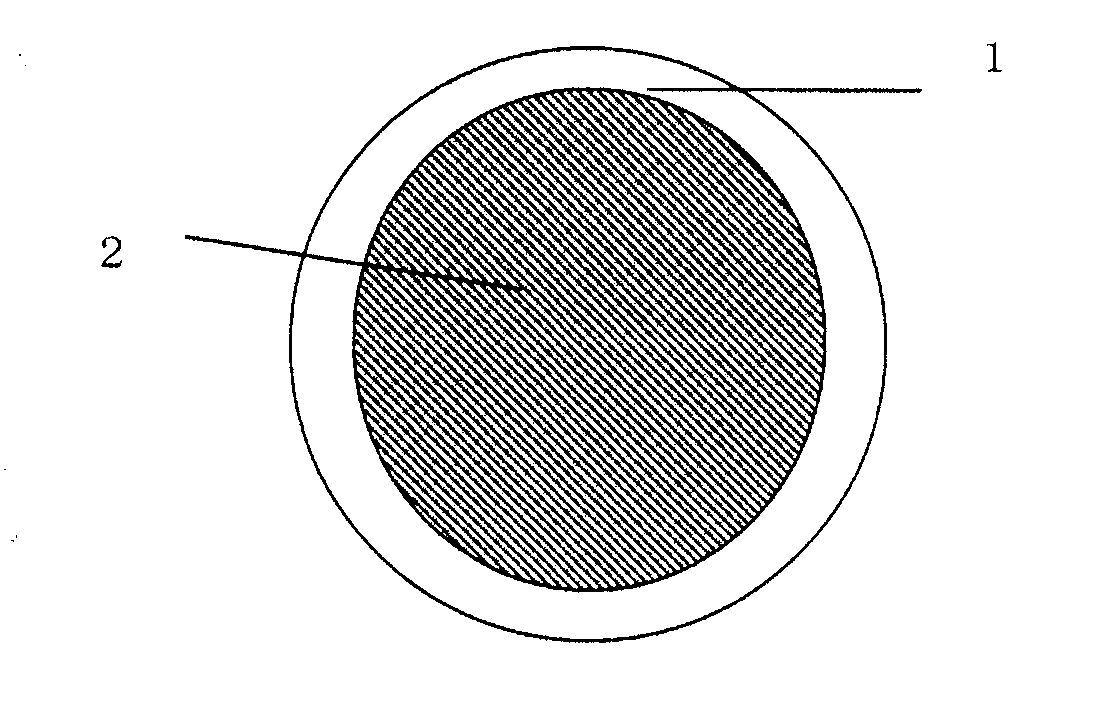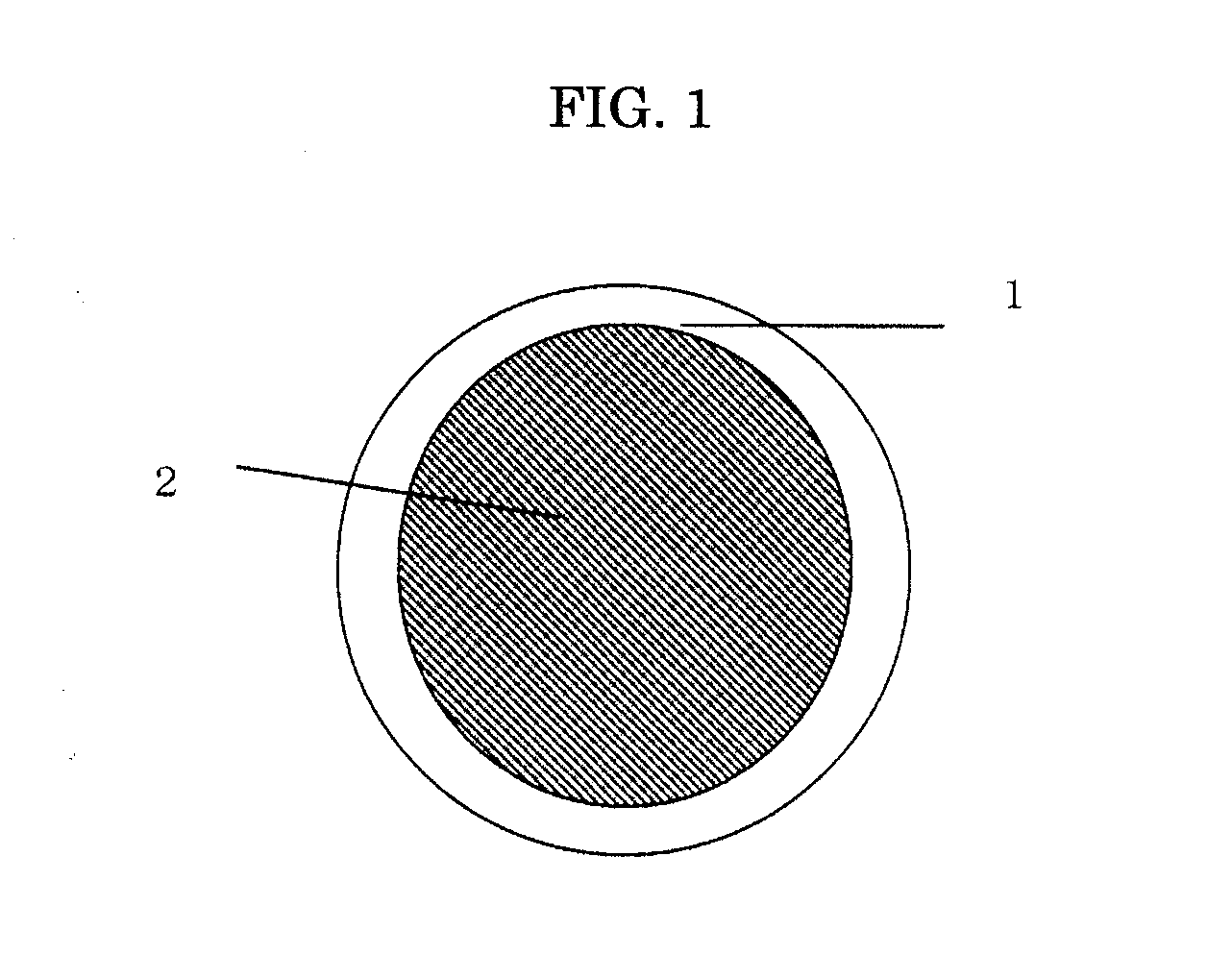Heat-expandable microspheres, process for producing the same, and application thereof
a technology of expansion and microspheres, applied in the field of heat expansion and expansion microspheres, can solve the problems of failure to exhibit desirable expansion performance, and achieve the effects of reducing expansion performance, excellent expansion performance, and high expansion ratio
- Summary
- Abstract
- Description
- Claims
- Application Information
AI Technical Summary
Benefits of technology
Problems solved by technology
Method used
Image
Examples
example 1.1
[0212]An aqueous dispersion medium was prepared by adding 100 g of sodium chloride, 80 g of colloidal silica containing 20 weight percent of silica as effective ingredient, 0.1 g of polyvinylpyrolidone, and 0.5 g of 1-% aqueous solution of ethylenediaminetetraacetic acid tetrasodium salt to 600 g of deionized water, and controlling the pH of the mixture to 2.8 to 3.2.
[0213]On the other hand, an oily mixture was prepared by mixing 180 g of acrylonitrile, 7C g of methacrylonitrile, 15 g of isobornyl methacrylate, 1.5 g of ethyleneglycol dimethacrylate, 75 g of isopentane as an blowing agent, 9 g of naphthenic oil as a gas migration inhibitor, and 1 g of 2,2′-azobisisobutyronitrile. The aqueous dispersion medium and the oily mixture were mixed, and the mixed liquid was dispersed into a suspension with a Homomixer (T.K. Homo-mixer manufactured by Tokushu Kika Kogyou) at the mixer rotational rate of 5000 rpm for 5 minutes. Then the suspension was transferred into a compressive reactor of...
examples 1.2 and 1.3
and Comparative Example 1.1
[0214]Heat-expandable microspheres were produced in the same manner as in Example 1.1 except that the amount of the naphthenic oil was replaced with those shown in Table 1.
example 2.1
[0216]An aqueous dispersion medium was prepared by adding 150 g of sodium chloride, 3 g of adipic acid-diethanol amine condensate, 40 g of aqueous colloidal solution of alumina hydrate to 500 g of deionized water, and agitating the mixture uniformly.
[0217]An oily mixture was prepared by mixing 100 g of acrylonitrile, 20 g of methacrylonitrile, 70 g of methacrylic acid, 10 g of methacrylamide, 10 g of styrene, 1.0 g of PEG (200) dimethacrylate, 1 g of 2,2′-azobisisobutyronitrile, 40 g of isobutane and 20 g of isooctane as blowing agents, and 9 g of naphthenic oil as a gas migration inhibitor. The aqueous dispersion medium and the oily mixture were mixed, and the mixed liquid was dispersed into a suspension with a Homomixer (T.K. Homo-mixer manufactured by Tokushu Kika Kogyou) at a mixer rotational rate of 7000 rpm for 2 minutes. Then the suspension was transferred into a compressive reactor of 1.5 liter capacity and purged with nitrogen, and the polymerization was performed at 70 deg...
PUM
| Property | Measurement | Unit |
|---|---|---|
| particle size | aaaaa | aaaaa |
| solubility | aaaaa | aaaaa |
| solubility | aaaaa | aaaaa |
Abstract
Description
Claims
Application Information
 Login to View More
Login to View More - R&D
- Intellectual Property
- Life Sciences
- Materials
- Tech Scout
- Unparalleled Data Quality
- Higher Quality Content
- 60% Fewer Hallucinations
Browse by: Latest US Patents, China's latest patents, Technical Efficacy Thesaurus, Application Domain, Technology Topic, Popular Technical Reports.
© 2025 PatSnap. All rights reserved.Legal|Privacy policy|Modern Slavery Act Transparency Statement|Sitemap|About US| Contact US: help@patsnap.com



